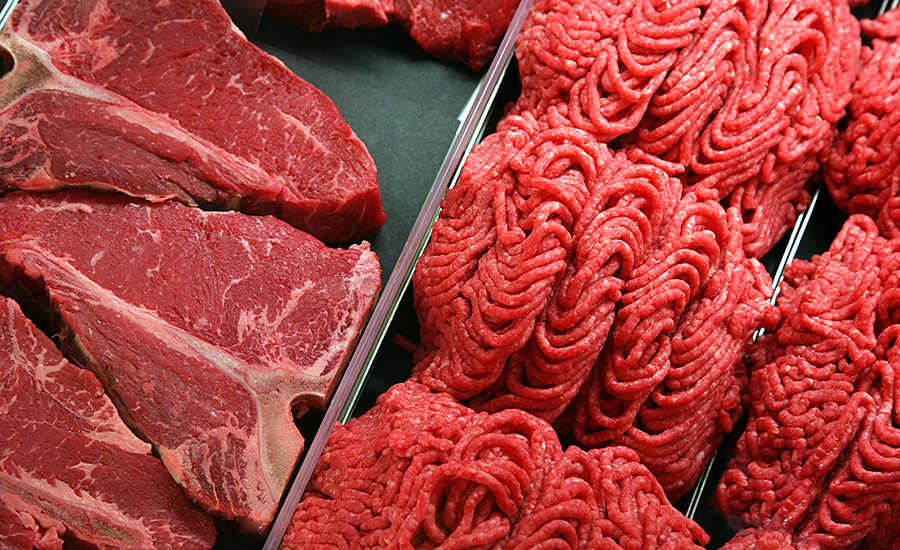What stands out in my mind about the prior year has been the fact that the general splitting of America into smaller and smaller “niche” camps is affecting us in ways most of us didn’t expect.
The trade war, African swine fever and a host of other issues from flooding to droughts have had major impacts on the industry. Those that are nimble in the marketplace are the most successful.
During the government shutdown, inspection personnel we count on were not being paid. I can’t imagine the stress of going to work without knowing when the next paycheck was coming in. While we didn’t hear of widespread production slowdowns, it was happening, and had it gone on longer it may have had a very derogatory impact on production. An aside to that: Several appeals, requests for grants, etc., were very slow to get a response, and in some cases had to be resubmitted. Having been on both sides of a government shutdown, I can emphatically say no one wins. The companies that legally can’t run without inspection look to lose business if inspectors can’t pay for gas to get to work. It wasn’t fun for anyone.
State of the Industry 2019
OverviewBeef (NCBA)
Pork
Chicken
Food Safety
Packaging
Beef (CAB)
Turkey
Veal
Lamb
Animal Welfare
Seafood
Workforce
Watch the 2019 State of the Industry Webinar
Register for free today!
We are seeing a concerted effort to drive a wedge between farmers and the harvest facilities; it is at the harvest facility that regulators have authority to take samples and close doors. It behooves us to work with our producers, but at the same time, I strongly recommend we move forward with proactive receipt systems so that if something does go wrong you can identify where it came from, and subsequently put a stop to it before it puts you out of business.
Adding to the propaganda machine, we had the accusations from several former FSIS officials, members of the press and CDC personnel that the industry was loading up swine with drugs and accusing producers of not providing them information they needed to perform investigations. The industry gets a black eye. Apparently, they forgot that while FSIS regulates meat, it doesn’t regulate farms. The Food and Drug Administration (FDA) already created a rule that requires recordkeeping, oversight by a veterinarian for use in veterinary feeds, etc ... One would assume the government regulators that made these accusations would have realized that they needed to work with FDA to obtain the information they were looking for.
During the last 12 months, we have seen several organizations pushing for dramatically increased scrutiny for potential food tampering and food fraud. While looking at the CDC data mentioned earlier, I didn’t come across any instances of obvious food fraud causing public health issues. This falls under economic rules, such as plastic is a contaminant in meat.
We are seeing non-meat items being marketed as meat replacements with several states moving to ensure these products are properly labeled. FSIS and FDA even have a memorandum of agreement on how they are going to handle these products for regulatory safety.
In comparing the number of federally inspected plants from 2014 to 2019 using the MPI Directory, there are 300 fewer facilities operating under federal inspection, or roughly 1 percent a year decrease. That said, although accurate numbers are not available on state and local establishments, we are seeing a definite trend of small- to medium-sized establishments either being built from the ground up or making larger additions and increasing production capacity. We are also seeing large brand holders manage their brands differently to appeal to the changing consumer.
Adding new employees continues to be difficult and many of the facilities I have visited over the last year are compensating by adding automation. This trend is picking up speed as equipment costs come down and the return on the investment payback period gets shorter. Much of this equipment comes with standard, or optional, sensing equipment that assist in maintaining food safety.
The FSIS Appendix A & B guidelines are again under review. Industry trade associates including the American Association of Meat Packers (AAMP) and the North American Meat Institute (NAMI) as well as scientists are working hard to get FSIS science to help fill gaps and ensure the industry can continue to use time-proven processes as well as potentially new standards to make safe, high-quality products that consumers demand. This willingness of the individuals, associations and regulators to come together and work through the challenge of ever modernizing science and industry techniques is to be commended.
What will the next year bring?
This one is easy: FSIS is talking hard and fast about modernizing inspection, with everything from how they perform harvest inspection to changing what labs test for and report. I expect they will run into headwinds from different groups. And because we are coming up on an election, it will make it much harder for them to make big steps; however, I expect to see FSIS taking steps to modernize inspection to include:
- updating Appendix A & B;
- increased emphasis on foreign-material contamination;
- Enforcement Investigations and Analysis Officer (EIAO) and District Veterinary Medical Specialist (DVMS) outreach activities;
- initiating the review process for modernizing harvest inspection in beef operations;
- focusing on Salmonella controls across all species;
- continued focus on streamlining labeling.
For dual jurisdiction facilities, Hazardous Analysis and Risk-Based Preventive Controls (HARPC) becomes a reality in January 2020. This is going to affect small operators the most. But because they supply to larger companies, I expect to see more partnerships as the larger retailers will need to provide assistance for small meat and poultry operators to comply with the increased regulatory burden. Remember, this isn’t a direct impact, but the requirements around supplier and ingredient risk assessments, food fraud, etc. can be very costly to implement.
The Global Food Safety Initiative (GFSI) is developing new benchmark guidelines with a publication date of February 2020, which coincides with the GFSI conference. These changes may again require changes to facilities that use one of the approved schemes to demonstrate compliance. As stated by GFSI it intends to continually modify as needed to meet food safety and quality expectations and needs of the consumer. Auditor credibility and increased GFSI oversight of the approved schemes are a couple the topics being modified.
My No. 1 piece of advice to avoid a recall is to create a very robust product inspection program to prevent contamination that integrates allergen controls. Your Sanitation Standard Operating Procedures (SSOP) must include key checks to make sure you can detect a contamination event or mislabeling error before product is shipped. Do you inspect incoming raw material prior to or during use? Are allergens clearly identified throughout your facility? Are the employees who perform critical and non-critical tasks trained to raise the flag if they spot something wrong? Can you demonstrate that your system can screen out any potential contamination and or identify that a product is mislabeled?
Protect your brand! Make sure you are looking for the applicable pathogens in your facility and that you can identify where they come from when you do find them. If your source material is coming in contaminated with a non-adulterant form of Salmonella, reach out to your supplier. If your customers provide you with information about one of your products react to it before the regulators get involved.
Remember, there is a clear disconnect between regulatory emphasis and what is causing foodborne outbreak investigations. The disconnect is translating into our production and preparation facilities as well. The key to avoiding a foodborne outbreak investigation of your products is paramount and simple: Ensure you are resourcing your food safety efforts and that they are focused on food safety, not just keeping the regulator and or auditor happy.
Reviewing the year’s recall numbers

Last year we expected greater focus on foreign-material contamination by regulatory agencies. This focus has continued as the U.S. Department of Agriculture’s Food Safety and Inspection Service (FSIS) has placed increased scrutiny on how we handle foreign-material contamination during production.
Based on the increase in recalls (September 2018 through August 2019 vs. September 2017 through August 2018) for foreign material of 54 percent (37 vs. 24) we are still amid the increased enforcement.
In general, recalls are up 36 percent (143 vs. 105) this year. Explanations include 12 recalls related to contaminated produce and the addition of recalls for catfish; however, that doesn’t give us the entire picture. Recalls for undeclared allergens are up 9 percent, products produced without the benefit of inspection are up 50 percent, recalls for Listeria are up 150 percent and Salmonella 266 percent.
Statistics, as many of you know, when manipulated or not fully explained, can be used to scare people. Keeping that in mind, if we remove the 12 recalls for contaminated produce being added after lethality (multi pathogen Listeria and Salmonella) in a meat product, the recalls for Listeria (9 vs. 6) and Salmonella (5 vs. 3) drop to only a 50 percent increase.
While this tells us recalls are up in general, undeclared allergens, foreign-material contamination and producing without inspection make up 66 percent of recalls. That doesn’t really give us the picture of how we are doing in the public-health arena.
To give a better understanding of how the meat industry is doing regarding public health, I pulled the data on foodborne outbreak investigations. Because of differences in how data is reported by Centers for Disease Control and Prevention (CDC), I used calendar year 2017 (when the most recent data was published) and 2010 for comparison. In 2017, meat products accounted for 13.71 percent of investigations, while in 2010 they accounted for only 11.37 percent. For the same time period there was an increase of 90 percent of recalls (71 vs. 135) of meat products. The key to all of this? Not a single investigation was done for allergen-related outbreaks, issues caused by foreign material or anything that I could tie to lack of inspection.
When I compare the actual investigations, the majority are for pathogen issues: E. coli, Salmonella, Listeria, Norovirus, etc., with Salmonella making up the vast majority. In comparing 2010 to 2017 recalls E. coli dropped 33 percent, and Salmonella dropped 85 percent, while Listeria increased 87 percent.
Final thoughts
As an industry, we need to work together to defeat Salmonella. We need to be laser-focused across all segments and species on what we can and can’t do, and assist our up- and downstream partners where we can while at the same time working with our regulators for sensible rules that will help us stop Salmonella in our supply chain. NP






Report Abusive Comment